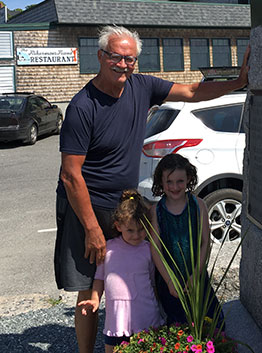“We do have to defeat Trump, but we don’t have to do it in the way the Democratic establishment wants us to,” Becky Bond, senior Sanders advisor, told People’s Summit conference-goers, according to Newsweek.
I have a problem with this statement. But I wouldn’t give it more than a moment’s attention had not others on social media referenced it as some kind of new and penetrating idea and practice. It isn’t. In fact, it is simplistic and, if taken too seriously by too many, even dangerous. Here’s why:
First of all, educating and mobilizing voters independently of the Democratic Party isn’t an original idea. The labor movement, communities of color, women, environmentalists, gay rights activists, and many more have been doing it for some time. But they don’t consider it a badge of honor that distinguishes them from “run-of-the-mill” Democrats. Nor do they turn it into a rationale that closes the door to collaboration with the Democratic Party. In the election and reelection campaigns of President Obama, for example, we saw this independence-collaborative dynamic on display, and to very good effect. And, this fall I expect we will see more of the same, as these same social organizations and social forces mobilize independently and jointly for Hillary and other Democrats down the ticket.
Second, the notion of a “Democratic establishment” can be very misleading, if it isn’t qualified. But Bond doesn’t do this here. Nor does Bernie Sanders in most of his speeches. In their rendering, the Democratic Party is corrupt, awash in corporate money, and in the pocket of Wall Street. But what goes unsaid, or comes in as a minor note, is that the Democratic Party also embodies different political currents, not simply a neoliberal one. In Congress – especially the House – many of its representatives and caucuses take consistently progressive (anti-neoliberal) positions on a broad range of issues. Much the same could be said about many grassroots Democrats. Nor from what Bond and Sanders say would anyone realize that the Democratic Party possesses a broad base of social power – labor, people of color, women, etc. – that the Sanders’ campaign, notwithstanding its many positive features, never made substantive inroads into. Indeed, any effort to “Crush Trump” in November, not to mention rein in the billionaires, banks, and global corporations in the years ahead, will take a coalition that includes these same social and political forces in its leadership as well as its base who for now and the foreseeable future operate loosely under the umbrella of the Democratic Party. Thus, these sweeping assertions, even if they capture an important aspect of reality, can mislead people at the strategic and tactical level at this stage of struggle. And again, this takes on special significance since neither Bernie’s movement nor the left generally are constructed broadly enough to defeat Trump in the near term or erect a new model of political and economic governance in the longer term, thereby making broad alliances with people and organizations who don’t share identical political views and loyalties necessary. Only a very clumsy, gendered, and racialized representation of the working class can give any credence to the claim that “workers” are in Sanders’ camp.
Finally, drawing hard and fast lines between Bernie and his supporters on the one hand and the “Democratic Party Establishment” on the other, as Bond did in the above statement, is problematic on the eve of the Democratic Party convention. Along with pressing positions on matters of rules and platform, the repertoire of Sanders and Clinton supporters at this point of the election process should also include – in fact give accent to – cooperation, compromise, and the search for common ground. After all, the primaries are in the rear view mirror and what should command everyone’s attention is the defeat of Trump and his GOP gang. Nothing will change the political dynamics of the country and open up the wellsprings of democracy more than a landslide victory over Trump in November. If there is a “Date with Destiny” for the American people, it isn’t today or when Democratic Party delegates gather in Philadelphia. It is on Election Day, Nov. 8, 2016, when the fate of the country will hang in balance. Everything else pales in significance and should be subordinated to making that day a dawn for a “new burst of freedom.”
Little, if anything, is to be gained by pushing one’s agenda to the point where one side wins a “victory,” but at the cost of an irreparable breach in the very coalition that is the only guarantee of a resounding defeat of Trump and his enablers. We should be mindful that in any forward looking coalition that avows high hopes and big dreams – and we need such coalitions in a world that is increasingly unstable, crisis ridden, interdependent, and unjust – cooperation and conflict will exist in an uneasy, but necessary tension. Expecting to get one’s way in every instance in coalitions of a broad and diverse character is at once a fool’s errand and a poor formula to guide the complicated and contradictory process of alliance formation and social change. Our nation’s history provides ample proof of this proposition. Let’s hope that this tension finds a positive resolution in the present moment. There is no reason why supporters of Hillary and Bernie can’t – to employ a familiar saying – “walk and chew gum at same time.” Tens of millions are counting on it.



